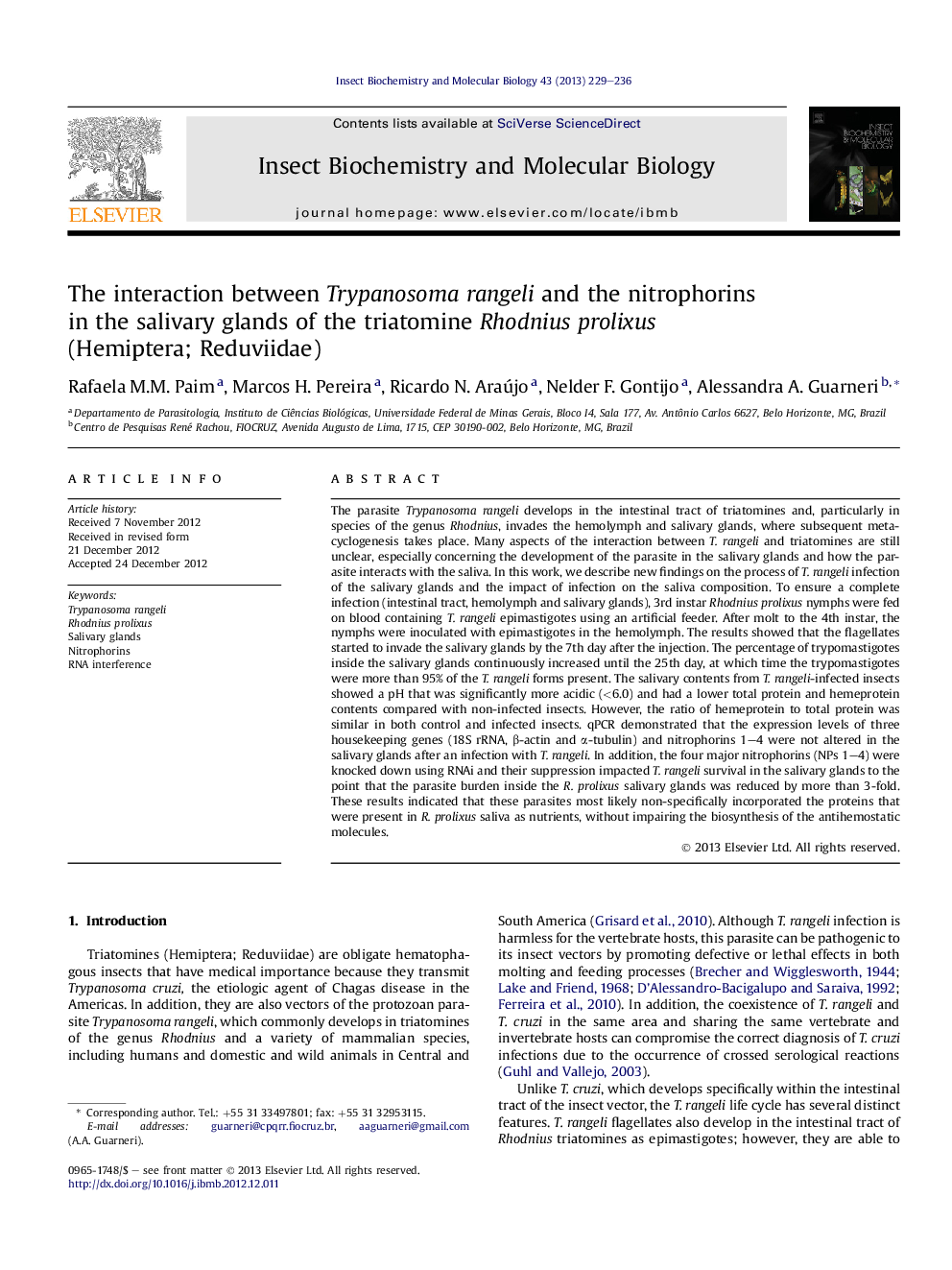| کد مقاله | کد نشریه | سال انتشار | مقاله انگلیسی | نسخه تمام متن |
|---|---|---|---|---|
| 1982193 | 1062264 | 2013 | 8 صفحه PDF | دانلود رایگان |

The parasite Trypanosoma rangeli develops in the intestinal tract of triatomines and, particularly in species of the genus Rhodnius, invades the hemolymph and salivary glands, where subsequent metacyclogenesis takes place. Many aspects of the interaction between T. rangeli and triatomines are still unclear, especially concerning the development of the parasite in the salivary glands and how the parasite interacts with the saliva. In this work, we describe new findings on the process of T. rangeli infection of the salivary glands and the impact of infection on the saliva composition. To ensure a complete infection (intestinal tract, hemolymph and salivary glands), 3rd instar Rhodnius prolixus nymphs were fed on blood containing T. rangeli epimastigotes using an artificial feeder. After molt to the 4th instar, the nymphs were inoculated with epimastigotes in the hemolymph. The results showed that the flagellates started to invade the salivary glands by the 7th day after the injection. The percentage of trypomastigotes inside the salivary glands continuously increased until the 25th day, at which time the trypomastigotes were more than 95% of the T. rangeli forms present. The salivary contents from T. rangeli-infected insects showed a pH that was significantly more acidic (<6.0) and had a lower total protein and hemeprotein contents compared with non-infected insects. However, the ratio of hemeprotein to total protein was similar in both control and infected insects. qPCR demonstrated that the expression levels of three housekeeping genes (18S rRNA, β-actin and α-tubulin) and nitrophorins 1–4 were not altered in the salivary glands after an infection with T. rangeli. In addition, the four major nitrophorins (NPs 1–4) were knocked down using RNAi and their suppression impacted T. rangeli survival in the salivary glands to the point that the parasite burden inside the R. prolixus salivary glands was reduced by more than 3-fold. These results indicated that these parasites most likely non-specifically incorporated the proteins that were present in R. prolixus saliva as nutrients, without impairing the biosynthesis of the antihemostatic molecules.
Figure optionsDownload high-quality image (161 K)Download as PowerPoint slideHighlights
► Trypanosoma rangeli infection can modify features of Rhodnius prolixus salivary glands.
► Color, pH, total protein and hemeprotein content were altered in infected glands.
► Housekeeping and nitrophorins 1–4 mRNA levels were not altered in infected glands.
► T. rangeli probably use the soluble proteins in saliva as source of nutrients.
► Nitrophorins 1-4 RNAi suppression impacted T. rangeli survival in the salivary glands.
Journal: Insect Biochemistry and Molecular Biology - Volume 43, Issue 3, March 2013, Pages 229–236